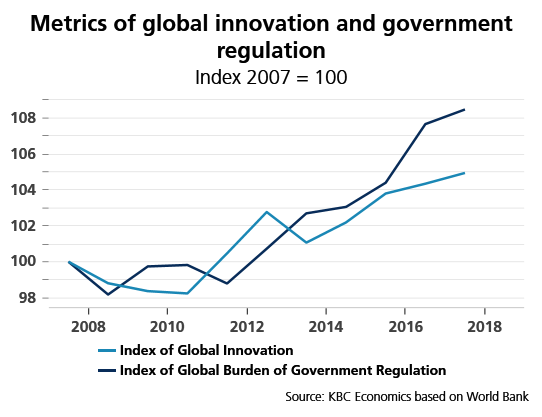Only the agile will survive in a Chaordic Economy

In today’s world, both ‘chaos’ and ‘order’, two seemingly paradoxical terms, are increasingly important for businesses. Although chaos in the economy is a constant, it is now taking on a more international dimension with rapid economic and non-economic changes involved. This results in a turbulent environment and in turn gives way to governments taking more control and order by introducing new regulation and supervision. The rise of the so-called Chaordic Economy will require businesses to become increasingly agile and adaptive.
It’s a VUCA world
It is no secret that the global economic environment can be labelled as VUCA, which stands for volatility, uncertainty, complexity and ambiguity. The acronym came into common usage in the late 1990s to describe the world’s new reality. VUCA might seem like a relatively old term, but in 2020, the world looks more VUCA than ever, largely due to the increasing speed at which things are changing. Several forces are driving this, from continuous geopolitical tensions, in particular trade conflicts, to more structural trends like climate change, ageing and the accelerating pace of technological advances.
VUCA increases the likelihood and potential impact of major crises. It implies increasing chances of something happening that has never happened before. Each year the Global Risks Report of the World Economic Forum identifies the most pressing risks that we face. In the 2019 edition, none of the top 10 risks in terms of impact are in the category ‘economic’. They are ‘environmental’ (e.g. extreme weather events, failure of climate-change mitigation and adaptation), ‘geopolitical’ (e.g. weapons of mass destruction), ‘technological’ (e.g. cyber-attacks) and ‘societal’ (e.g. water crises, spread of infectious diseases). Although these risks themselves are non-economic in nature, the economic impact is potentially very high.

As a result of VUCA and its increasingly international and non-economic nature, individual businesses are moving into a highly turbulent and chaotic environment. This has a significant impact on their daily operations and longer-term strategic decisions. VUCA chaos can even threaten businesses’ continuity.
From chaos to order and back
On the back of the financial crisis of 2008, and with an eye to answering challenges like climate change and advancing technology, government’s have implemented massive new legislation, regulations and supervision mechanisms with more to be introduced (e.g. related to data protection, accounting standards, fraud prevention) (see figure). As a result, besides VUCA, businesses are subject to an ever-growing set of legislative and regulatory requirements and governance and administrative procedures, putting immense pressure on staff to comply with them. This attempted move towards control and order is in itself adding to complexity and, hence, is feeding the VUCA world. More and more, businesses are therefore operating in a so-called Chaordic Economy. The term ‘chaordic’ (cha from chaos and ord from order) was coined in 1999 by former VISA CEO Dee Hock. It became a popular buzz word in the management literature, whereby a chaordic enterprise is defined as “an enterprise in which chaos and order are maintained in dynamic balance by virtue of an intentional process of management”.
Agile or irrelevant
The businesses that will survive and ultimately stand out in a chaordic economy are those that are agile and continuously shift their strategy. This requires responding to and taking control of the changing environment. By anticipating what comes next and preparing strategic responses, businesses can create certainty for themselves and hence have an important advantage vis-à-vis non-agile competitors. New tools like big data and artificial intelligence can provide a helping hand in managing chaos and order. The chaordic economy should therefore not be seen as a threat. Instead, it widens the spectrum of possible action and, by stimulating creativity and innovation, even opens the way to a successful future. At least for agile businesses.
